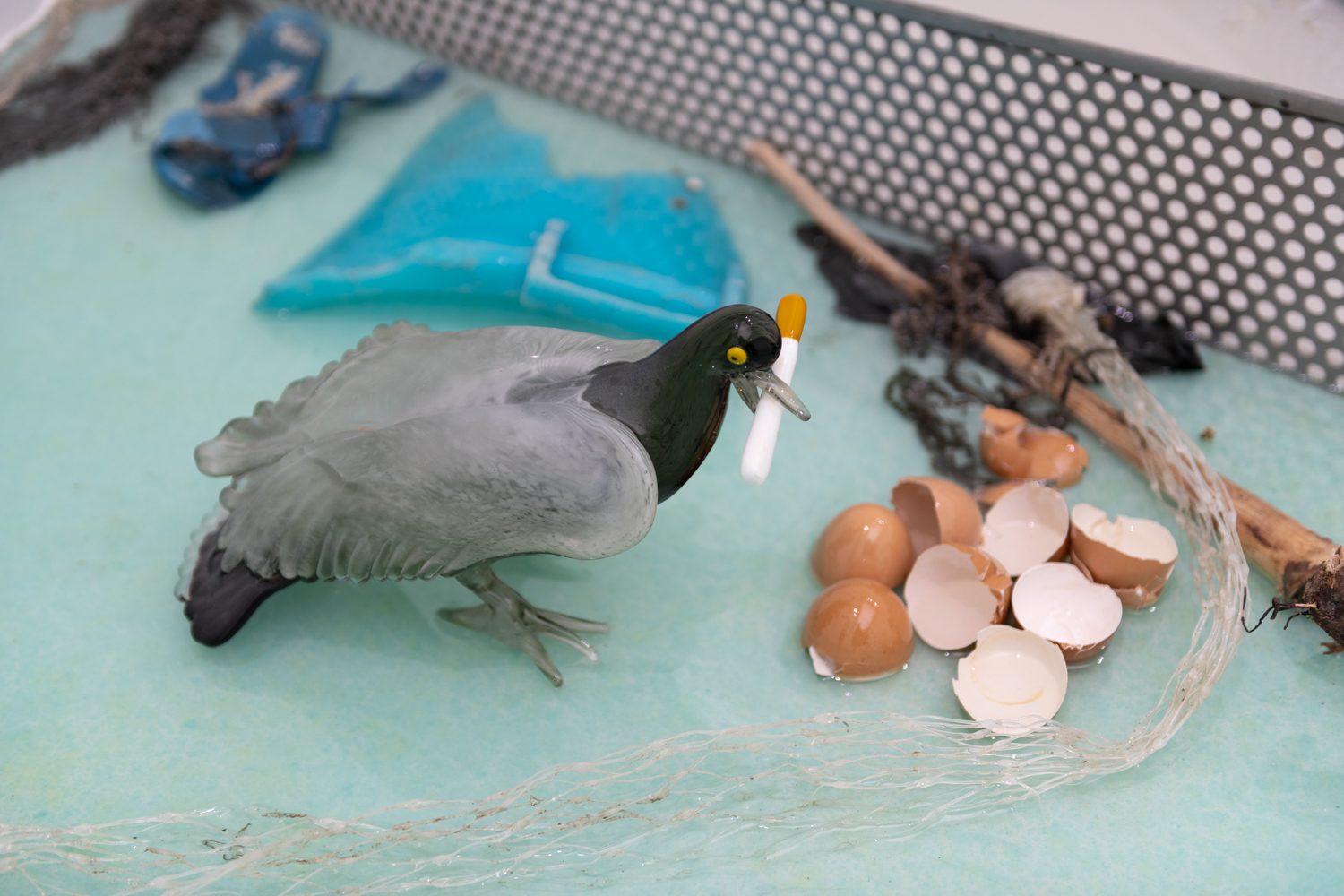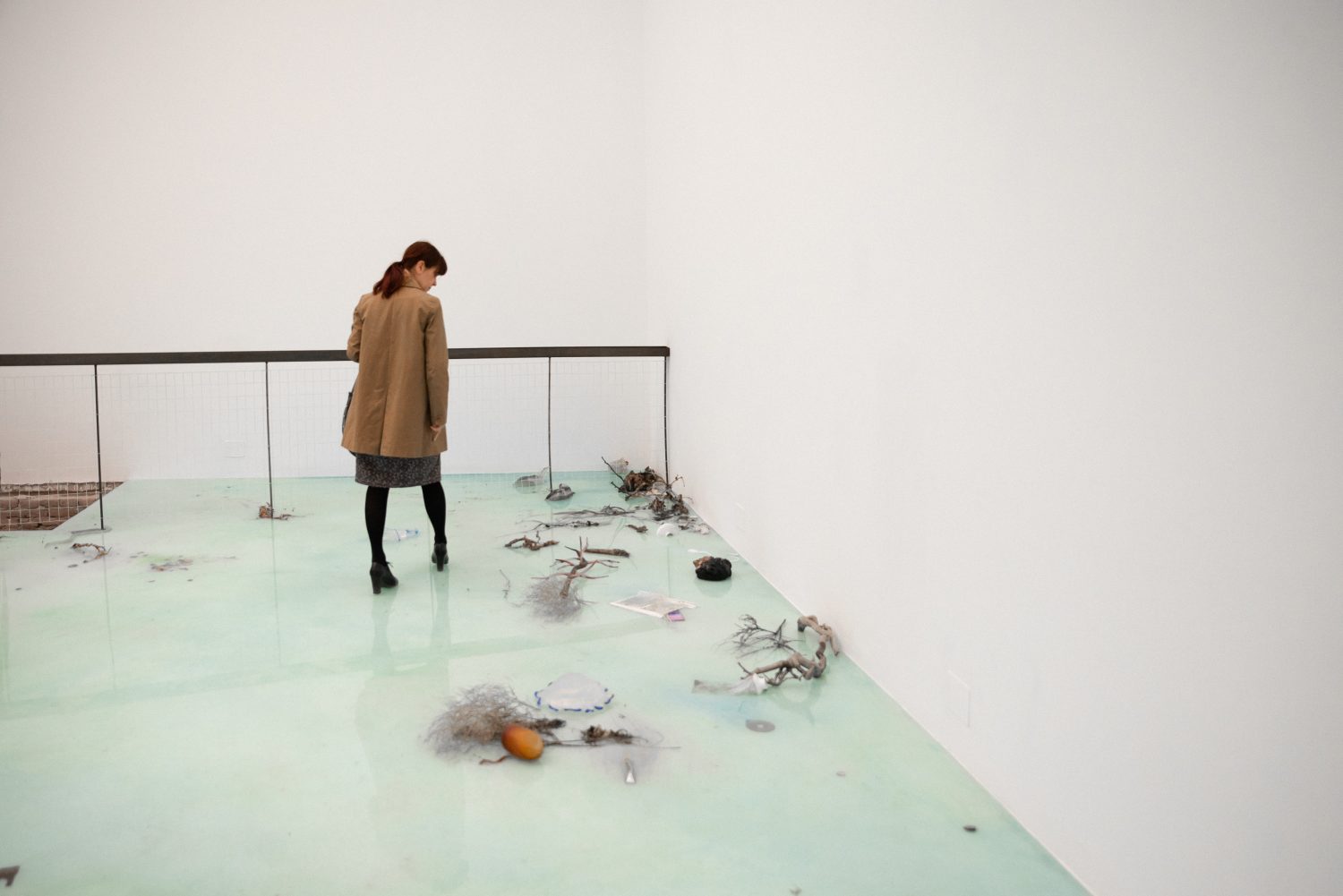Laure Prouvost
Venice Calling
“The image becomes more striking when it is written like a memory”
Laure Prouvost is representing France this year at the Venice Biennale. The artist, born in 1978 in Lille, moved to London in 1999 to study at Central Saint Martins and then Goldsmiths College; today she lives in Antwerp. In 2011, she won the Max Mara Art Prize for Women. Two years later, she was awarded the prestigious Turner Prize. Her work has been shown at the Lyon Biennale, the New Museum in New York, the Rochechouart Museum, the Palais de Tokyo in Paris, the Bass Museum in Miami, the Red Brick Art Museum in Beijing, the Haus Der Kunst in Munich, plus other showcases in Poland, the Netherlands, Italy and Switzerland. Her work always features an ambiguity between reality and fiction, which she likes to build through videos, installations and objects.
You are representing France at the 58th Venice Biennale with “Deep See Surrounding You” (“Vois Ce Bleu Profond Te Fondre”). How did you develop the pavilion in continuity with your existing corpus?
I conceived it above all as a team effort, because it is not an artist’s pavilion, but a set of energies that depended on multiple brains and sets of hands. This work was carried out from my initial directions, because I knew exactly where I wanted to film this road trip, but still leave room for spontaneity. The crux of the video revolves around the idea of the octopus, this belly surrounded by tentacles that think by feeling… it is also a metaphor for the immediate nature of the film, informed by the actors’ dialogues and their way of working. We tamed each other, while constantly improvising. When we approached the pavilion itself, I asked myself how to open it up, beyond the large main doors, and I tried to integrate all the crevices and sneak in, the way an octopus can retract before taking shape.
Does the octopus underlie the main themes of the film, linking between different generations and countries?
Yes, because travel—in the broadest sense—is the main subject of this pavilion. There is not one single conclusion and the work is not only what is exhibited, but this global testimony of our journey over several months. The trip is the opportunity to create an exhibition of this scale, leaving the Paris suburbs to go to Venice by way of Roubaix, Hauterives and Marseille.

There’s the idea of building an aesthetic, not only under the viewer’s gaze, but for you yourself…
It is true that surprises arose during the shooting. I like that, in the end, the video—at the heart of the pavilion—is projected on loop. The same story always starts again, like the tentacle of the octopus that feels, and feels all over again, because the creature has no memory. So it constantly touches and re touches the same thing, even if the experience is barely any different each time. The viewer can approach the film in the same way, taking what he or she wants in accordance with his or her own story. For example, the scenes in Roubaix might be moving to those who have frequented this type of cafés we shot in, or it might be moving to those saddened by the end of industrialization. For me, each place had a topic.
One of the characters is an elderly lady, and you have made many videos where you talk about your grandmother—like your installation Wantee. Is the sea (la mer), which is very present in the film, also an allegory for mother (la mère)?
Definitely. One of the protagonists, Benoît, who is a priest, said in Marseille at one point: “J’aime la mer, toutes les mers, j’aime ma mère…” (“I love the sea, all seas, I love my mother…”) This wordplay enhances the act of seeing, which, in English, has a similar phonetic overlap between “see” and “sea.” Can we be eyes? Can you be a mother, a sea, who smells and feels?
The video also bears witness to strong references to art history, such as >>Chien Andalou (1929), co-signed by Luis Buñuel and Salvador Dalí, or at Saut dans le Vide (1960), by Yves Klein…
In fact, I referenced the latter in the idea of flying over and overlooking nations, like a bird that belongs to none of them. These are, of course, ideals, like my homage to the Palais idéal du Facteur Cheval in Hauterives. I create a surrealist aspect to my film, because this moment in art history really questioned representation and what we observe, all while playing with words and considering language or images as materials to mix.


Do you feel a connection with other contemporary videographers with this fast sequencing of shots and very rhythmic passing between one scene to another?
Mediums like TV, film or video in general work this way. Life goes in one direction, but filming makes it possible to improve on, to exalt the present moment. We understand, we don’t understand… everything goes fast, but on our screens, we look at these moments again and different things appear every time. The world echoes this speed, which sometimes seems impossible to catch up with, but the image becomes more striking when it is written like a memory.
Is this video—as always in your quirky dreamlike style—more politically charged than your previous work, like by coming back to questions of migration and ecology?
It’s more that I was thinking, to begin with, that I was invited to represent a country: France. So by extension, the subject was: What do we symbolize? Who are we? Not only our nation, but what defines this concept of a nation? It necessarily becomes a little political, without literally becoming a testament. When I say: “Now, you’re like a bird, you belong to a nation…” I mean to address the idea of preserving our culture and the beauty of our history, without necessarily imposing a border. This ideology is more attractive and corresponds well with my practice, which is always directly related to the place I am invited to show in. Place helps trigger the subject I want to focus on.
Interview: Marie Maertens
Portrait and photos: Jean Picon & Michaël Huard












